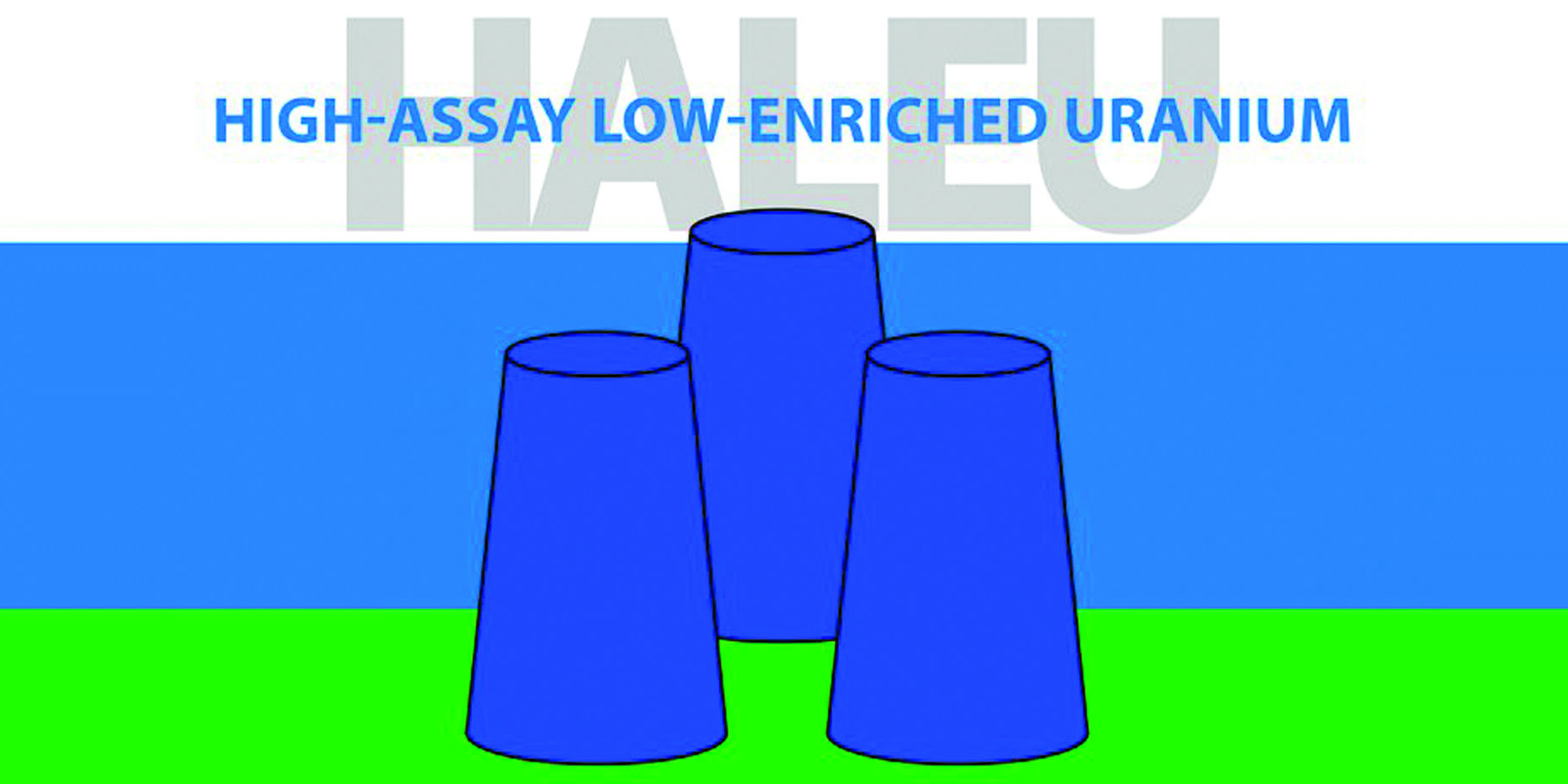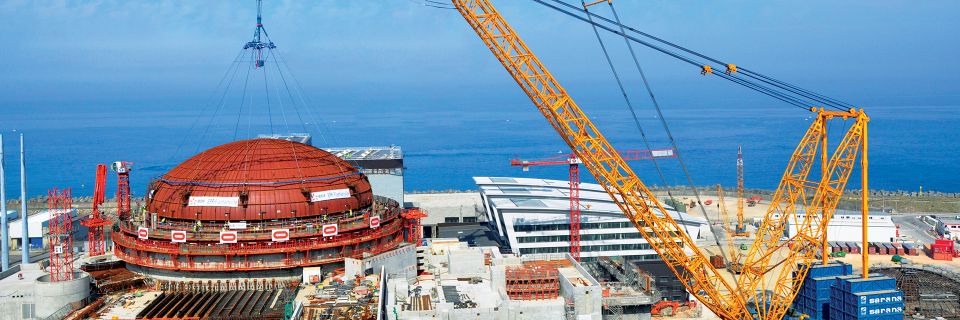DOE rolls out simplified HALEU enrichment RFP, opens door to LEU from allies

The Department of Energy issued a final request for proposals (RFP) on January 9 for uranium enrichment services to help establish a commercial domestic supply of high-assay low-enriched uranium (HALEU) to fuel a potential fleet of advanced reactors. Without HALEU, advanced reactors will not be able to proceed past the demonstration stage. And given the investments of capital and time required to license and build a nuclear power plant—even a smaller, more efficient advanced reactor—eliminating fuel uncertainty could be what a utility needs to invest in new construction.
That’s why Congress authorized a HALEU Availability Program in the Energy Act of 2020. After industry consultation, the DOE issued draft RFPs for comment in June 2023 that split front-end HALEU fuel cycle services into two RFPs—the enrichment RFP released today, which would enrich uranium feedstock to up to 19.75 percent fissile U-235, and an RFP released in November for deconversion of the enriched uranium into metal, oxide, and other forms to be used as fuel for advanced reactors.
Scope of work: The DOE’s Office of Nuclear Energy plans to award one or more contracts to produce 10 metric tons of HALEU from domestic uranium enrichment capabilities. Once enriched, the HALEU material will be stored at the enrichment site as uranium hexafluoride gas until there is a need to ship it for deconversion. Under HALEU enrichment contracts resulting from this RFP, which have a maximum duration of 10 years, the government will assure each contractor a minimum order value of $2 million, to be fulfilled over the term of the contract. (The overall contract ceiling is $2.7 billion, but so far just $500 million has been earmarked for both RFPs through the Inflation Reduction Act.) Enrichment and storage activities must occur in the continental United States and comply with the National Environmental Policy Act.
The scope of work will include providing engineering data and environmental information needed for regulatory compliance and licensing; obtaining NRC licenses and all other necessary approvals; technology identification, development, and design for HALEU production and storage; engineering, fabrication, and testing of facilities, equipment, and supplies; coordinating, developing, and/or executing all aspects of transportation for HALEU, including but not limited to the acquisition of shipping containers, route planning, route approvals, permitting, community engagement, emergency planning, scheduling, real time monitoring, lifting and handling, qualifications, licensing, and shipping.
Potential enrichers have 60 days—or until 5 p.m. (MST) on March 8—to submit their proposals. (Sixty days were also originally granted for deconversion RFP respondents; the January 30 due date announced on November 28 was later extended to February 13 upon the release of an amended solicitation.)
What changed from draft to final? The final enrichment RFP incorporated industry feedback received on a draft version issued in June. But unlike the final deconversion RFP, which was little changed from its draft version, the enrichment RFP backed down from a range of potential production quantities between 5 and 145 metric tons of HALEU during the 10-year contract period, settling instead on 10 metric tons for all proposers.
The final RFP also will permit proposals that use LEU (enriched up to 5 percent U-235) from partner or allied nations, though U.S. LEU enrichment services are preferred. The draft RFP had required all enrichment services, from natural uranium to 19.75 percent U-235, to be provided in the United States.
The final RFP also modifies the preferred source and location of the natural uranium and conversion services stipulated in the draft RFP for enrichment services. Uranium mined and milled in the United States from existing mines was preferred, with uranium sourced in North America “next preferred.” But unlike the draft RFP, “allied or partner nations” get a mention. Though they are less preferred than partners in North America (read: Canada) for mining, milling, and conversion services, they are now in with a chance.
While Canada has an apparent edge over other allies, the new language, included after five G7 nations—the United States, Canada, Japan, France, and the United Kingdom—committed to “mobilize at least $4.2 billion” in government and private investment in enrichment and conversion capacity on December 7 during the Net Zero Nuclear Summit—an event held in Dubai, United Arab Emirates, during COP28.
Table 1 of the final enrichment RFP
| Proccess | Location Preferece | New Capacity Consideration |
|---|---|---|
| Mining/milling | U.S. preferred, North America next preferred, allied or partner nations next preferred | Existing capacity preferred |
| Conversion | U.S. preferred, North America next preferred, allied or partner nations next preferred | New or restored capacity preferred |
| Enrichment (natural up to <5%) | U.S. preferred, allied or partner nations next preferred | New capacity preferred |
| Enrichment (>5% up to <20%) | U.S. only | No preference |
Sizing up the competition: According to the final enrichment RFP, “DOE aims to establish a temporary domestic demand for HALEU to stimulate a diverse, domestic commercial supply that would ultimately lead to a competitive HALEU market and a more certain domestic HALEU demand.” The DOE has estimated that more than 40 metric tons of HALEU could be needed by the end of the decade, with additional HALEU required each year to fuel a fleet of advanced reactors.
In November, Centrus Energy produced 20 kilograms of HALEU under contract to the DOE at the DOE’s American Centrifuge Plant in Piketon, Ohio—the first time in more than 70 years that HALEU had been produced in the nation. But Centrus is not the only potential respondent. Companies that have expressed interest in providing HALEU enrichment services in the United States include Urenco USA, which is currently producing low-enriched uranium using gaseous centrifuge technology in Eunice, N.M.; Global Laser Enrichment, which is installing pilot-scale laser modules to demonstrate its technology while at the same time eyeing commercial-scale prospects; and Orano USA, the U.S. subsidiary of French firm Orano.







